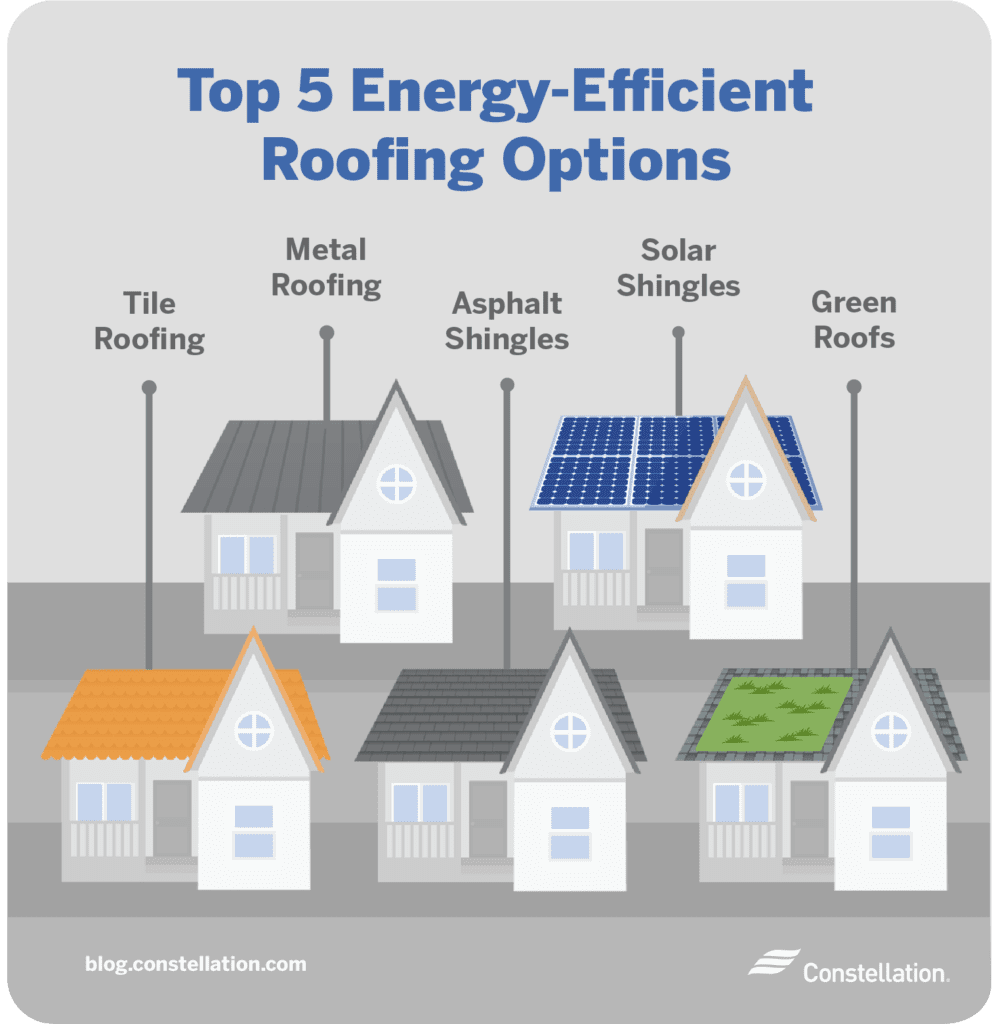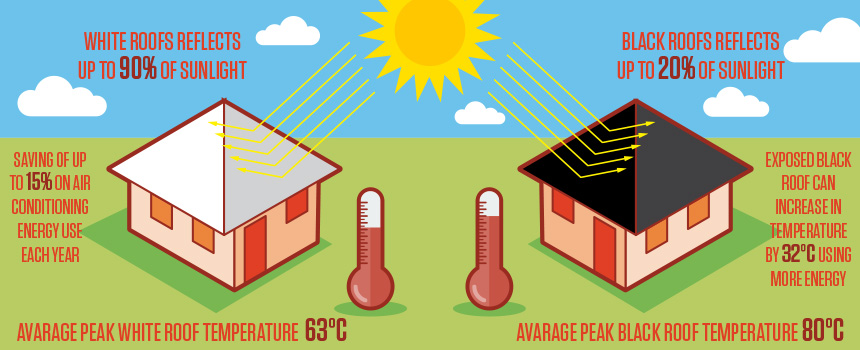Choosing the right color for your roof is not just a matter of aesthetics; it can also have a significant impact on the energy efficiency of your home. With energy conservation becoming increasingly important, homeowners are now seeking ways to make their houses more energy efficient. In this article, we will explore the question of what color roof is most energy efficient, examining the various factors that come into play and providing you with valuable insights to help you make an informed decision for your own home. Whether you’re thinking of a cool, reflective roof or a dark, absorbing one, stay tuned to discover which color is the best choice for maximizing energy efficiency in your dwelling.

Introduction
Why is roof color important for energy efficiency?
When it comes to energy efficiency, the color of your roof might not be the first thing that comes to mind. However, the color of your roof plays a significant role in the overall energy consumption of your home. The color of your roof affects how much heat is absorbed or reflected, which in turn affects the amount of energy needed to heat or cool your home. Therefore, selecting the right roof color is crucial for maintaining an energy-efficient home and reducing your carbon footprint.
Light Vs. Dark Roofs
The impact of roof color on energy consumption
The color of your roof can have a substantial impact on your energy consumption. Light-colored roofs have higher solar reflectance, meaning they reflect a larger portion of the sunlight that hits them. This helps to reduce the amount of heat absorbed by your roof and subsequently, the amount of heat transferred into your home. On the other hand, dark-colored roofs have low solar reflectance and tend to absorb more heat, making them less energy efficient.

Factors Affecting Energy Efficiency of Roof Color
1. Climate and location
The climate and location of your home play a significant role in determining the energy efficiency of your roof color. In hotter climates, such as in the southern regions, light-colored roofs are generally recommended to reflect the sunlight and keep the building cooler. Conversely, in colder climates, dark-colored roofs can help to absorb heat from the sun and aid in keeping the building warm.
2. Insulation and ventilation
While roof color does impact energy efficiency, it is important to consider other factors such as insulation and ventilation. Proper insulation can prevent unwanted heat transfer, regardless of the roof color. Additionally, adequate ventilation can facilitate air circulation and prevent the buildup of heat in the attic, reducing the overall cooling load on your home.
3. Roofing material
The type of roofing material used can also influence the energy efficiency of your roof color. Different roofing materials have varying levels of solar reflectance and thermal emittance. Some materials, such as metal or ceramic tiles, naturally have higher solar reflectance and lower heat absorption. It is important to choose roofing materials that are compatible with your desired roof color and offer good energy-saving properties.
4. Solar reflectance and thermal emittance
Solar reflectance refers to how much sunlight is reflected by the roof surface, while thermal emittance refers to how much heat is emitted or radiated by the roof. Choosing a roof color with high solar reflectance and thermal emittance can significantly reduce the amount of heat absorbed by your roof, leading to lower cooling costs and improved energy efficiency.
Impact of Roof Color on Energy Consumption
1. Cooling loads
The color of your roof plays a crucial role in the cooling loads of your home. Dark-colored roofs, especially in hot climates, absorb a significant amount of solar heat, which can raise the temperature of the roof surface and transfer heat into the attic and ultimately the living space below. This increases the demand for air conditioning and adds to the cooling load of your home. On the other hand, light-colored roofs reflect more solar heat and help to keep the roof and attic cooler, reducing the need for excessive air conditioning.
2. Heating loads
In colder climates, the color of your roof can impact the heating loads of your home. Dark-colored roofs, by absorbing more solar heat, can help to warm the building by utilizing this heat during the day. This can be beneficial in reducing heating costs during the winter months. Conversely, light-colored roofs do not absorb as much heat and may require additional heating to maintain comfortable indoor temperatures.
3. Urban heat island effect
The color of roofs in urban areas can collectively contribute to the phenomenon called the urban heat island effect. Dark-colored roofs, when widely prevalent in urban landscapes, can absorb and retain excessive amounts of heat, leading to increased ambient temperatures. This can negatively affect the energy efficiency of buildings nearby as well as impact overall air quality. By opting for lighter-colored roofs, urban areas can mitigate the urban heat island effect, reduce energy consumption, and create a more comfortable living environment.

Best Roof Colors for Energy Efficiency
1. Light-colored roofs
Light-colored roofs, particularly in hot climates, are generally considered more energy efficient. They have higher solar reflectance, which means they reflect more sunlight and absorb less heat. This helps to keep the roof and attic cooler, reducing the demand for air conditioning. Light-colored roofs are an excellent choice for those looking to lower cooling costs and maintain a comfortable indoor environment.
2. Cool roofs
Cool roofs are specifically designed to reflect more sunlight and absorb less heat compared to traditional roofs. They can be any color, including light or dark, as long as they have high solar reflectance and thermal emittance properties. Cool roofs can significantly reduce cooling loads, leading to energy savings and improved energy efficiency.
3. Reflective roofs
Reflective roofs are another option for energy-efficient homes. These roofs are made from materials with high solar reflectance and thermal emittance, regardless of their color. Reflective roofs reflect a large portion of the sun’s heat away from the building, reducing the heat absorbed by the roof and the cooling load on the home. They are particularly beneficial in hotter climates and can contribute to substantial energy savings.
Case Studies
1. The effect of roof color in different climates
Numerous case studies have been conducted to analyze the impact of roof color on energy consumption in different climates. One study conducted in Phoenix, Arizona, compared the energy use of homes with light-colored roofs to those with dark-colored roofs. The study found that homes with light-colored roofs had significantly lower cooling costs and overall energy consumption compared to homes with dark-colored roofs.
2. Energy savings with cool roofs
Another case study focused on the energy savings achieved with cool roofs. The study compared a commercial building with a cool roof to a similar building with a conventional dark-colored roof. The results indicated that the building with the cool roof had reduced cooling loads by 15-20%, resulting in substantial energy savings and reduced environmental impact.

Considerations for Choosing an Energy-Efficient Roof Color
1. Local climate
The climate of your location should be a primary consideration when selecting an energy-efficient roof color. Hotter climates generally benefit from light-colored or cool roofs, while colder climates may benefit from dark-colored roofs. Understanding the local climate and its impact on your energy requirements can help guide you towards the most energy-efficient choice.
2. Building orientation and design
The orientation and design of your home can affect how your roof interacts with the sun. The shape and angle of your roof, as well as any surrounding structures or shade, can impact the amount of sunlight your roof receives. Considering these factors when choosing a roof color can help optimize energy efficiency and ensure effective heat transfer.
3. Roofing material compatibility
It is essential to consider the compatibility of your chosen roof color with the roofing material. Some materials, like metal or ceramic tiles, naturally have higher solar reflectance and work well with any color. However, certain roofing materials may have limitations or restrictions when it comes to color selection. Consulting with roofing professionals can provide valuable insights into the most suitable roof color options for your chosen material.
Long-term Benefits of an Energy-Efficient Roof Color
1. Energy savings and reduced utility bills
Opting for an energy-efficient roof color can result in significant energy savings over the long term. By reducing cooling and heating loads, you can lower your reliance on air conditioning and heating systems, leading to reduced utility bills. The savings accumulated over the years often outweigh the initial investment in selecting an energy-efficient roof color.
2. Enhanced comfort and indoor temperature control
An energy-efficient roof color can enhance the comfort of your home by minimizing temperature fluctuations. By reflecting or absorbing appropriate amounts of heat, energy-efficient roof colors can help maintain comfortable indoor temperatures year-round. This creates a more pleasant living environment and reduces the need for excessive heating or cooling, ultimately improving overall comfort and well-being.
3. Environmental benefits
Choosing an energy-efficient roof color has significant environmental benefits. By reducing energy consumption, you can lower your carbon footprint and contribute to a more sustainable future. Additionally, the urban heat island effect can be mitigated by opting for lighter-colored roofs, reducing heat retention in urban areas and supporting healthier ecosystems.

Roof Color Myths Debunked
1. Myth: Dark roofs are always more energy efficient in cold climates
Contrary to popular belief, dark roofs are not always more energy efficient in cold climates. While dark roofs can absorb heat during the day, they can also lead to excessive heat loss during cold nights. Light-colored roofs can help retain heat during the day and, in combination with insulation, prevent excessive heat loss during nights. The choice of the most energy-efficient roof color in cold climates should consider various factors, including insulation, ventilation, and local climate.
2. Myth: Light-colored roofs are not suitable for hot climates
Light-colored roofs are often considered more energy efficient in hot climates. They reflect a larger portion of the sunlight, reducing the heat absorbed by the roof and subsequently the cooling load on the building. While dark-colored roofs can absorb heat and potentially contribute to warming the building during cooler nights, the benefits of light-colored roofs in reducing cooling costs and improving comfort generally outweigh any potential nighttime cooling advantages of dark roofs.
Conclusion
The importance of choosing the right roof color for energy efficiency
Choosing the right roof color for energy efficiency is a critical decision that can have a significant impact on your home’s energy consumption and overall comfort. By considering factors such as climate, insulation, roofing material, and solar reflectance, you can make an informed decision that will save energy, reduce utility bills, and contribute to a more sustainable future. Whether you opt for a light-colored roof, a cool roof, or a reflective roof, prioritizing energy efficiency in your roof color choice is a wise investment for a greener home.